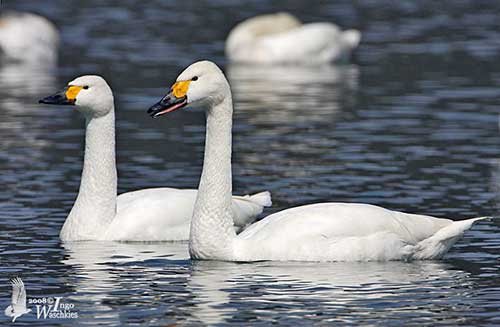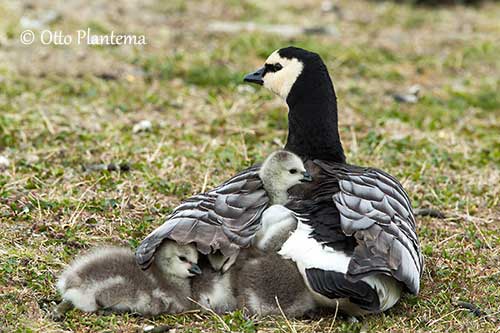
Bird list:
Arctic Tern - Sterna paradisaea – Sterne arctique
Atlantic Puffin – Fratercula arctica – Macareux moine
Barnacle Goose - Branta leucopsis - Bernache nonnette
Black Guillemot - Cepphus grylle - Guillemot à miroir
Black-legged Kittiwake - Rissa tridactyla - Mouette tridactyle
Black-throated Diver (Loon) - Gavia arctica - Plongeon arctique
Boreal Owl - Aegolius funereus - Nyctale de Tengmalm
Brant Goose - Branta bernicla - Bernache cravant
Citrine Wagtail - Motacilla citreola – Bergeronnette citrine
Common Eider - Somateria mollissima - Eider à duvet
Common Goldeneye - Bucephala clangula – Garrot à œil d’or
Common Kestrel – Falco tinnunculus – Faucon crècerelle
Common Murre - Uria aalge - Guillemot de Troïl
Common Ringed Plover - Charadrius hiaticula - Pluvier grand-gravelot
Common Sandpiper - Actitis hypoleucos - Chevalier guignette
Common Scoter - Melanitta nigra - Macreuse noire
Dunlin - Calidris alpina - Bécasseau variable
Eurasian Teal - Anas crecca - Sarcelle d’hiver
Glaucous Gull - Larus hyperboreus - Goéland bourgmestre
Greater White-fronted Goose - Anser albifrons - Oie rieuse
Harlequin Duck - Histrionicus histrionicus - Arlequin plongeur
Horned Lark - Eremophila alpestris – Alouette hausse-col
King Eider - Somateria spectabilis - Eider à tête grise
Lapland Longspur - Calcarius lapponicus - Bruant lapon ou Plectrophane lapon
Little Auk or Dovekie - Alle alle - Mergule nain
Little Stint - Calidris minuta - Bécasseau minute
Long-tailed Jaeger - Stercorarius longicaudus - Labbe à longue queue
Mallard – Anas platyrhynchos – Canard colvert
Merlin - Falco columbarius - Faucon émerillon
Northern Fulmar – Fulmarus glacialis – Fulmar boreal
Northern Harrier - Circus cyaneus hudsonius - Busard d’Amérique
Northern Pintail - Anas acuta - Canard pilet
Northern Wheatear - Oenanthe oenanthe - Traquet motteux
Parasitic Jaeger or Arctic Skua - Stercorarius parasiticus - Labbe parasite
Peregrine Falcon - Falco peregrinus - Faucon pèlerin
Pomarine Skua or Jaeger - Stercorarius pomarinus - Labbe pomarin
Purple Sandpiper - Calidris maritima - Bécasseau violet
Osprey – Pandion Haliaetus – Balbuzard pêcheur
Razorbill - Alca torda - Petit Pingouin (Pingouin torda)
Red-breasted Merganser - Mergus serrator - Harle huppé
Red Phalarope - Phalaropus fulicarius - Phalarope à bec large
Red-throated Diver (Loon) - Gavia stellata - Plongeon catmarin
Rhinoceros Auklet - Cerorhinca monocerata - Macareux rhinocéros
Ruddy Turnstone - Arenaria interpres - Tournepierre à collier
Snow Bunting - Plectrophenax nivalis - Bruant des neiges ou Plectrophane des neiges
Snowy Owl - Bubo scandiacus – Harfang des neiges
Thick-billed Murre - Uria lomvia - Guillemot de Brünnich
Tufted Duck - Aythya fuligula - Fuligule morillon
Tundra Bean Goose - Anser serrirostris - Oie de la toundra
Tundra Swan - Cygnus columbianus - Cygne de la toundra
White Wagtail - Motacilla alba - Bergeronnette grise
Yellow-billed Loon or White-billed Diver - Gavia adamsii - Plongeon à bec blanc
Sources:

Ingo Waschkies
Bird Photography
BIRD SPECIES OF NOVAYA ZEMLYA
Arctic Ocean in northern Russia
Novaya Zemlya is a mountainous archipelago that consists of two main islands, Severny (northern) and Yuzhny (southern). These large islands are separated by the narrow (2-3 km) Matochkin Strait that connects the Barents Sea and the Kara Sea. Numerous smaller islands are also part of the archipelago located in the Arctic Ocean in northern Russia (from which it is administratively dependent), off the extreme NE coast of Europe. The archipelago extends over an area of 90,650 square kilometres.
These mountainous islands are an extension of the northern Urals, with the highest point, located on Severny Island at 1,547 metres of elevation. The northernmost half of Severny is covered with ice, whereas the southern part is a barren Arctic desert. The southern island, Yuzhny, is covered with tundra, but there are no trees or bushes. The temperatures vary from 6,4°C in July to -22°C in January.
The southern island is partly inhabited, but today, people living there only engage in reindeer herding and trapping, hunting and fishing. Formerly, between 1955 and 1990, this region was a site of nuclear testing.
Novaya Zemlya wildlife includes Polar Fox and Polar Bear, reindeers and lemmings, and a variety of bird species, and especially geese. The ecology in influenced by the severe weather conditions.
There is no endemic bird species, but some nesting birds occur regularly in these cold and icy landscapes.
Text by Nicole Bouglouan
Sources for the text:
Novaya Zemlya: The Extreme of Europe
Novaya Zemlya: birds, animals adapt to nuclear test site
Wikipedia, the free encyclopaedia

Otto Plantema
Trips around the world